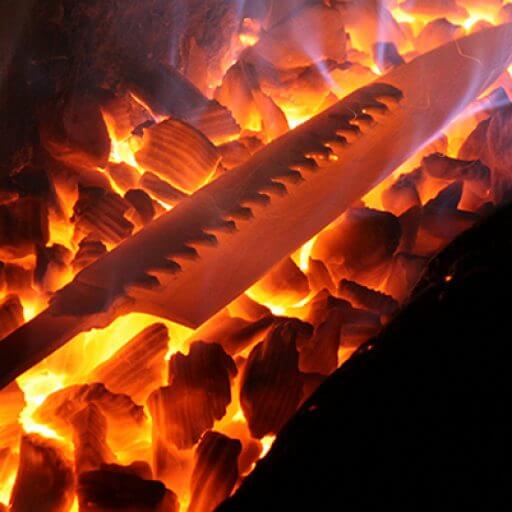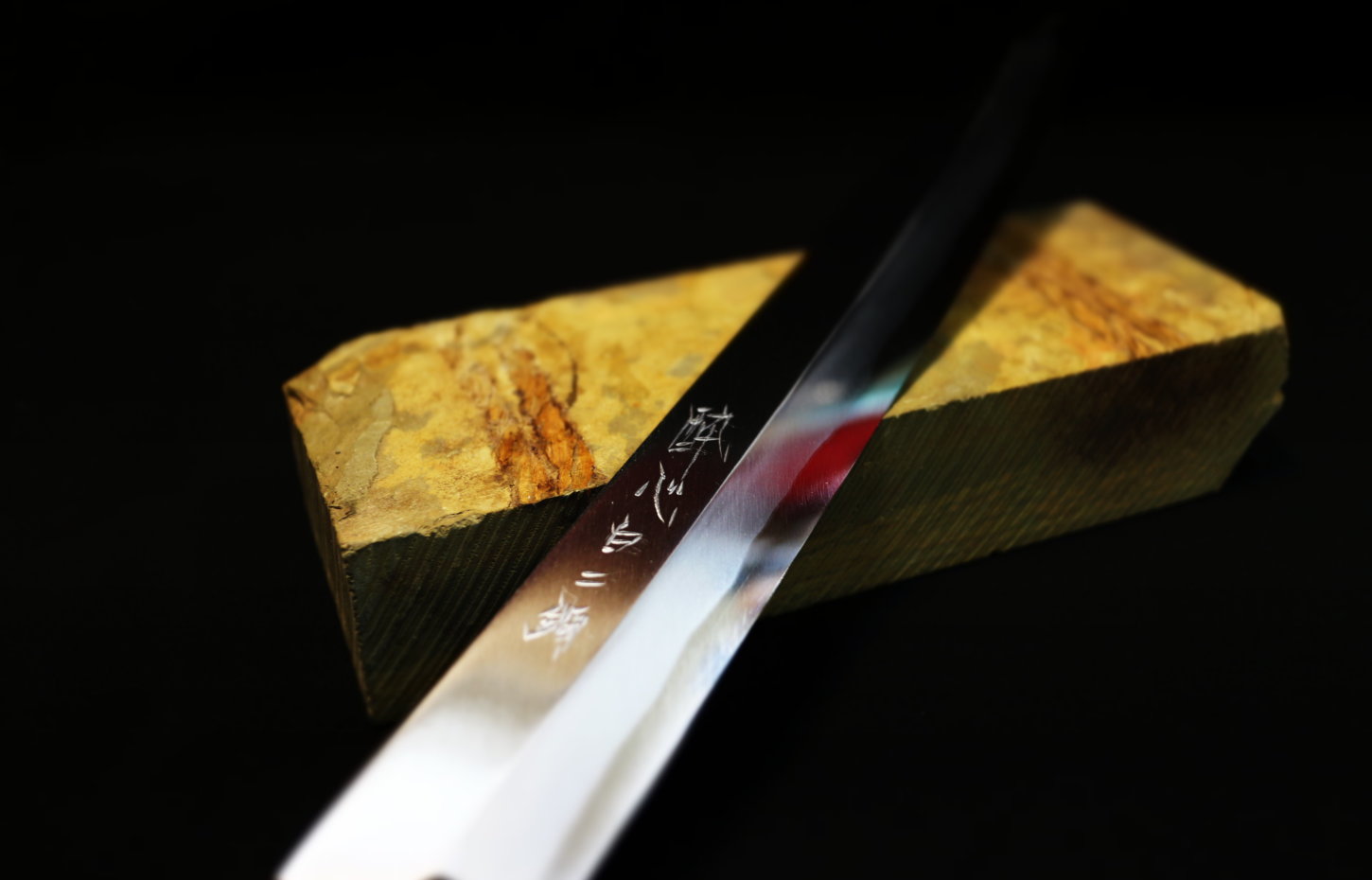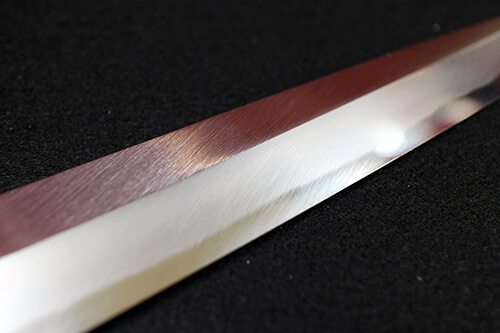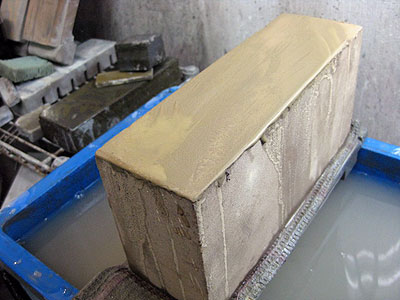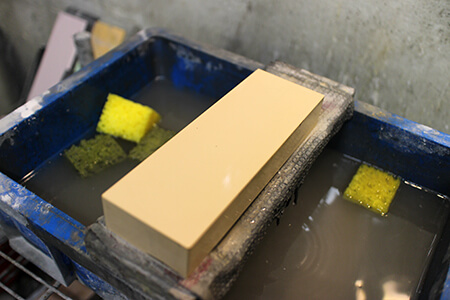A Tale of Contrasts: Western and Japanese Knives

I’ve come to realize the difference between Japanese and Western knives, albeit a bit belatedly. Lately, I’ve been troubled by the hardness of the steel. Living in Sakai, Osaka Prefecture, where traditional Japanese knives are prevalent, much of the discussion tends to revolve around single-beveled blades. This led my thoughts to be biased towards the premise of a single bevel. So, I decided to discard this odd fixed notion and began considering knives more broadly.
Even though Japanese-made Western-style knives tend to have a single-beveled edge, they aren’t purely single bevels, often closer to a 7:3 ratio. This means they don’t need to be as delicate as traditional Japanese knives. Considering that professionals use them with proper techniques and don’t abuse them by prying or pounding, I started to feel it wasn’t necessary to obsess over chipping or other issues. In the realm of Japanese knives, there’s a notion that ‘hard equals difficult to sharpen’ and ‘thinning equals chipping,’ promoting the idea that a tough and hard knife is superior.
On the other hand, in the world of Western knives, there’s a belief that a hard knife will maintain its edge longer without dulling. While both perspectives emphasize the benefits of a tough and hard knife, the knife’s structure differs. So, even a very rigid knife doesn’t pose a problem because of these differences in construction.
Considering all this, the type of steel suitable for Japanese and Western knives becomes apparent. For instance, when it comes to crafting with a particular type of steel, it leans towards Japanese style, and so on.
It’s challenging to articulate this in words, but these past few days have been about sensing the fine line between rigidity and flexibility.
hibishugyo
2007-01-10
